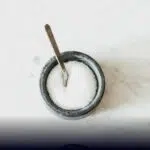National Archives Day is a yearly celebration marked on October 21 every year.
The National Archives of the Philippines is the country’s official repository for public documents and archives, where they are kept, conserved, and made available to the general public for research and study. Following former President Fidel V. Ramos’ Proclamation No. 660 of 1995, this day is observed. The Proclamation emphasizes the important role that archives play in a variety of national development initiatives. The day also serves to honor archivists and the amazing work they do in preserving the archives.
History of National Archives Day
A total of around 60 million records from centuries of Spanish control in the Philippines, as well as the American and Japanese occupations, and the Republic’s years, are housed at the National Archives of the Philippines. It also serves as the country’s final archive for the vast number of notarized documents.
The institution’s roots go back to the Spanish colonial government’s Division of Archives (DAR). Most colonial records were distributed over the islands, mostly in Catholic religious centers. However, the Treaty of Paris in 1898 gave the Philippines to the US. By the treaty’s eighth article, the American government assumed control of Philippine records on the islands and in Spain. So the Archives Office was born. In essence, the Americans designated a “keeper of the Spanish Archive.” Since the Archives were controlled by several government entities, this was a critical job. In 1901, it became part of the Executive Bureau. It moved to the Department of Public Instruction the same year and then to the Executive Bureau in 1915 where it was renamed the Division of Archives, Patents, Copyright, and Trademarks. After that, the Philippine Library and Museum merged. In 1928, the National Library was renamed the Division of Archives.
The Archive moved from the National Library to the Department of General Services after WWII. President Carlos Garcia established the Bureau of Records Management under the stated department in 1958 by Executive Order No. 290. The department was involved in coordinating and planning government-wide strategies for permanent or historical records storage and disposition. It also involved three divisions which were; Current Records, Archives, and Records Storage. Records of permanent and historical value were stored and restored by the Archives Division.
National Archives Day timeline
The Bureau of Archives is established.
With the backing from UNESCO, the International Council of Archives begins on June 9.
Former President Fidel V. Ramos proclaims October 21 as National Archives Day in his proclamation No. 660 of 1995.
The establishment of The National Archives of the Philippines serves as a successor to The Bureau of Archives.
National Archives Day FAQs
In the Philippines, where can you find the national archives?
The national archives of the Philippines are located in the city of Manila.
How many collections are in the archives?
There are two major collections which are the Spanish Period Collection as well as the American and Republic Period Collection.
What is the oldest record available in the Philippines archives?
Some of the earliest records in the archive date back to the reign of Miguel López de Legazpi, the first Spanish Governor-General of the Philippines, who reigned between 1565 and 1572.
How to Observe National Archives Day
Show the importance of archives
Let people, online and offline, know the importance of archives. This lets them know how to preserve any records or documents with them and how core it is to preserve a piece of history.
Check out archives
Archives are a one-of-a-kind and priceless legacy that is passed down from one generation to the next. To ensure that their worth and significance are preserved, archives must be handled from the beginning of time. You can check out the archives in your country to learn more.
Learn how archivists work
You can learn how archivists preserve important historical documents and records. Beyond documents and records, audio-visual records are also kept and archivists work hard to make sure all of them are properly preserved.
5 Reasons For Preserving Archives
Record keeping purpose
Record keeping and archival image building is done to increase their worldwide awareness.
To focus attention on archives
It brings attention to the unusual, extraordinary, and uncommon documents that have been preserved at archival institutions.
Importance of records
Increases public understanding of the significance of records and archives. {[Raises understanding
Raises understanding
Raises the understanding of the public, business, and private sectors on the importance of long-term archival preservation and accessibility.
Increases awareness
Increases awareness among key decisions about the importance of records management for effective governance and development.
Why National Archives Day is Important
It preserves archives
The preservation of records and archives is crucial not just for states and municipalities, but also for enterprises and organizations. National Archives Day allows them to shine a light on the importance of preserving archives.
It makes the archives accessible
In addition to preserving the archives, the National archives of the Philippines are also responsible for ensuring the documents and records are accessible to the public. This makes sure that anyone and everyone has unrestricted access to all the records and documents.
It boosts cultural heritage
One of the organization's principal responsibilities is to conserve the sources of information on Philippine history, as well as the fundamental elements of cultural heritage and collective memory. This is incredibly important for the culture and heritage of the people in preserving their history.
National Archives Day dates
| Year | Date | Day |
|---|---|---|
| 2025 | October 21 | Tuesday |
| 2026 | October 21 | Wednesday |
| 2027 | October 21 | Thursday |
| 2028 | October 21 | Saturday |
| 2029 | October 21 | Sunday |




















